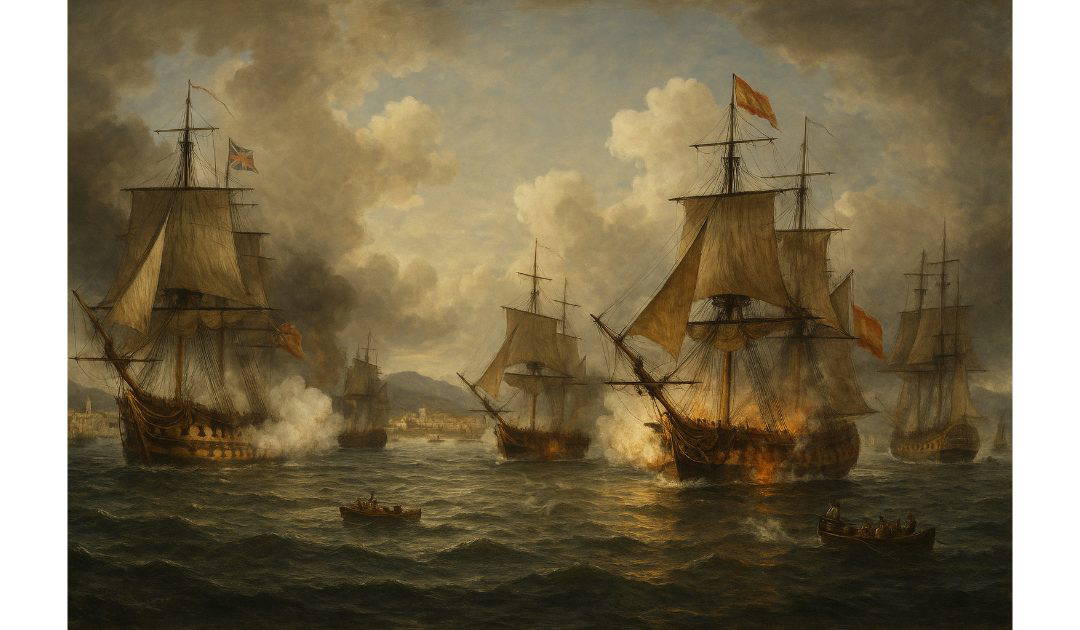The First Battle of Algeciras fought on the 6th of July, 1801 was a significant naval engagement during the French Revolutionary Wars, specifically within the War of the Second Coalition. When we think of naval battles of this war, the heroic successes of Nelson spring to mind. But it didn’t start so well. This battle took place in Algeciras Bay, near the southern coast of Spain, and involved a confrontation between the British Royal Navy and the combined forces of the French Navy, supported by Spanish shore batteries.
The British fleet, under the command of Rear-Admiral Sir James Saumarez, sought to neutralise a French squadron under Rear-Admiral Charles Linois that had anchored at Algeciras. Saumarez’s squadron comprised six ships of the line, including the formidable HMS Caesar, along with several frigates. The French force, though outnumbered in ships, had the advantage of strong defensive positions, bolstered by Spanish fortifications on the shore.
On the morning of the 6th of July, Saumarez launched an aggressive assault. His strategy hinged on quickly overwhelming the French ships before they could fully organise their defences. However, unfavourable winds hampered the British manoeuvres, disrupting their formation and making it difficult to maintain coordinated attacks. Despite these challenges, HMS Venerable, HMS Pompee, and HMS Hannibal engaged the French flagship Formidable and its supporting vessels.
The battle soon turned chaotic, with intense cannon fire exchanged between the fleets. British ships faced not only the broadsides from French warships but also relentless bombardment from Spanish coastal batteries. HMS Hannibal, attempting a daring move to cut off the French escape route, ran aground under heavy fire. Despite valiant efforts to refloat and defend the ship, Hannibal was ultimately forced to surrender, marking a rare defeat for the Royal Navy during this period.
The British suffered significant losses, with over 120 killed and many more wounded. The French also endured heavy casualties but successfully retained their position, aided by the Spanish defences. The battered British fleet withdrew, marking the engagement as a tactical victory for the Franco-Spanish alliance.
Despite this setback, the British fleet regrouped and launched a successful counterattack in the Second Battle of Algeciras just days later. Nevertheless, the First Battle of Algeciras demonstrated the formidable challenge of engaging well-defended naval positions and highlighted the importance of coordination between naval forces and coastal fortifications.
This battle underscored the evolving nature of naval warfare in the age of sail, where mastery of the seas required not just superior ships and seamanship but also effective strategies to counter fortified positions. The courage and resilience displayed by both sides left a lasting legacy in naval history, influencing tactics and military thought in subsequent maritime conflicts.

